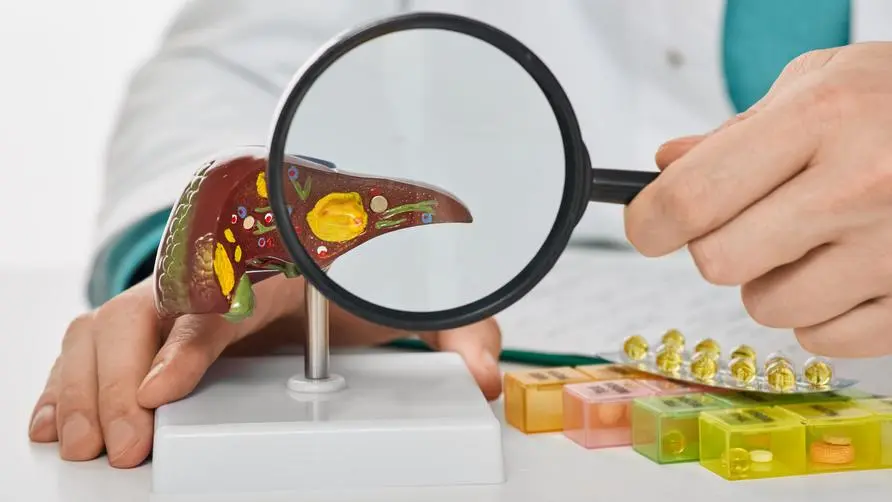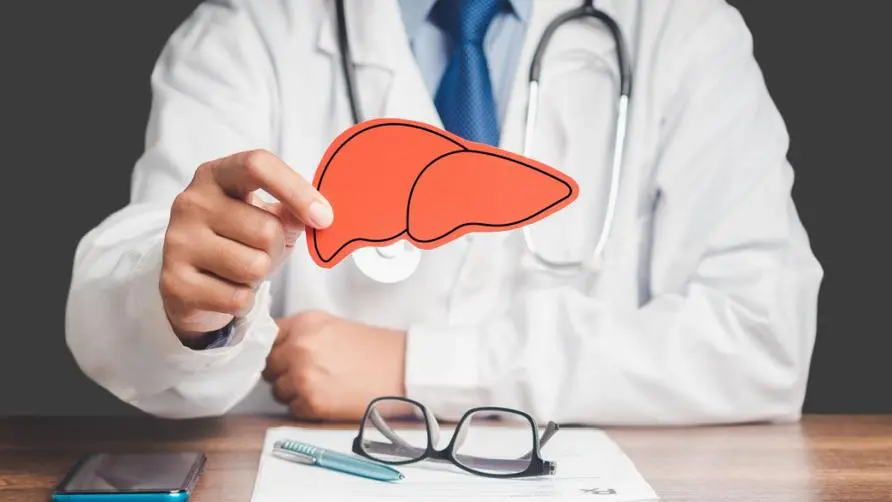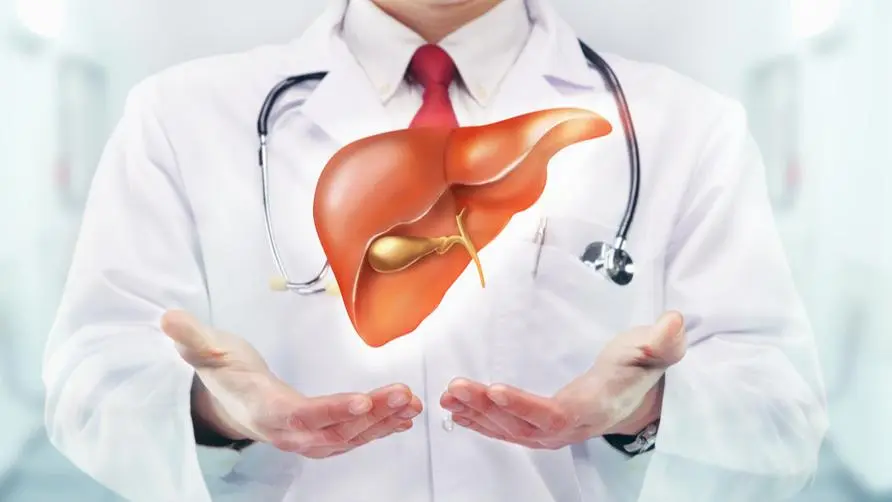The risk of hepatitis C in high-endemic towns in central and southern Taiwan is 10 times higher? Famous doctor: Early screening and treatment can reduce the chance of liver cancer treatment by 70%

Are there towns in central and southern Taiwan where the risk of hepatitis C is 10 times higher? Two major groups should pay attention to
With the popularization of hepatitis C screening, the number of confirmed cases is increasing year by year. Hidden hepatitis C virus in the body will not only lead to chronic hepatitis, but may also cause cirrhosis and liver cancer? Dr. Dai Jiayan, deputy director of Chung Ho Memorial Hospital of Kaohsiung Medical University and professor of hepatobiliary medicine at the School of Medicine, said in an interview that compared with hepatitis B in Taiwan, hepatitis C does have more geographical distribution and ethnic tendencies.
Dr. Dai Jiayan explained that the average rate of hepatitis C in Taiwan is about 3-4%, and may be as high as 10%-30% in specific towns in central and southern Taiwan. It is speculated that the infection is related to the early sharing of needles, tattoos, acupuncture, dental treatment and other equipment. On the other hand, some special groups, including kidney dialysis patients or drug addicts, are also at higher risk of hepatitis C infection.
“The current goal of prevention and treatment of hepatitis C is to eradicate it. With the advancement of modern medical treatment, the incidence of blood transfusion infection is very rare. We should also use universal screening and early treatment to benefit patients and prevent the virus from continuing. Spread among the crowd!”
Hepatitis C has no symptoms and 1/3 of the liver indexes are normal! Liver cancer reduced by 70% after cure
However, even if hepatitis C patients have the virus in their bodies, they may not have obvious symptoms, and their liver index may be the same as that of ordinary people? Dr. Dai Jiayan pointed out that there is no nerve distribution in the liver. Clinically, cases of severe inflammation and even liver tumors that have grown to 10 centimeters can be seen, but the patient has no pain symptoms. Once symptoms such as jaundice, ascites, hydropleural effusion, lower limb edema or bleeding occur, it has often progressed to serious conditions such as liver failure.
Dr. Dai Jiayan reminded that about 30% of hepatitis C patients have hepatitis C virus in their blood, but their liver index is normal. There are also some patients who only experience non-specific symptoms such as fatigue, and then ignore the follow-up after their body adapts. By the time the liver inflammation problem is discovered, it has become quite serious. Therefore, it is even more important to increase awareness of screening and tracking of hepatitis C virus.
“What we are most worried about is that before the patient is found, the condition has worsened, from severe liver inflammation to cirrhosis and liver cancer, which is the so-called “liver cancer trilogy”. This is also the main goal of hepatitis C prevention and treatment. It is important to treat hepatitis as soon as possible before it worsens to prevent further deterioration of the liver!”
Dr. Dai Jiayan explained that according to research, whether it is interferons used in the past or oral drugs that are more popular and convenient now, curing the virus can actually reduce the incidence of liver cancer by about 70%. Liver cancer diagnosed early can also be completely cured. . We appeal to people who have hepatitis C virus in their bodies or have chronic hepatitis problems to actively deal with, treat and track them to help their bodies stay away from the threat of liver cancer.
The liver C screening rate and treatment rate in Taoyuan District reached 100% and 98% respectively, and are expected to be replicated in various towns and villages.
Hepatitis C in Taiwan has a geographical trend of being concentrated in certain areas. Dr. Dai Jiayan pointed out that Taoyuan District in Kaohsiung was once an area with a high prevalence of hepatitis C. Through on-site screening of more than 1,000 local registered adult residents, the screening rate reached 100%, and the treatment rate is over 98%. The overall prevention and treatment effect is excellent. It has become a demonstration area for effectively eliminating hepatitis C virus through screening and treatment. This model is currently replicated in Ziguan Hospital, Pingtung Lion Hospital, Taiwu and Taitung Daren and other regions should achieve the overall prevention and treatment goal of eliminating hepatitis C as soon as possible.
Hidden liver cancer cases are often discovered when medical centers set up “outreach clinics” in remote rural areas to assist people in screening for diagnosis and treatment. Dr. Dai Jiayan said that recently a patient in the outreach clinic had applied for liver C drugs and was going to start taking the drugs after the ultrasound examination. However, the patient was found to have liver cancer and was immediately transferred to a high-tech hospital to undergo laparoscopic surgery to successfully remove the liver cancer, that is, he was given oral drugs. treat.
“Why are outreach clinics established?” Dr. Dai Jiayan pointed out that in the past, interferon injections had many side effects and were difficult to take care of. Later, oral antiviral drugs became available, which have the advantages of easy treatment, fewer side effects and high safety. Medical teams can bring drugs to remote towns and places with insufficient medical resources. After helping people diagnose hepatitis C and completing ultrasound examination, they can start drug treatment and remind patients to continue to come back for follow-up. What’s more important is that early-stage or late-stage liver cancer is sometimes detected through outreach clinics and further treatment can be arranged for the patient.
2025 Qianqing eliminates liver C! Call on Taiwanese to receive free screening as soon as possible
The World Health Organization has set a global goal to eliminate hepatitis C by 2030, and Taiwan’s Ministry of Health and Welfare has formulated policies that hope to eliminate hepatitis C as early as 2025. Dr. Dai Jiayan reminded that to achieve this goal, two indicators must be achieved: a screening rate of 90% of the population, and a cure rate of more than 80% for those suitable for medication.
The most important task at present is to screen and identify patients so that they can be treated. The National Health Department provides free once-in-a-lifetime hepatitis B and hepatitis C screening for adults aged 45-79 (45-79 for Aboriginal people). As long as virus antibodies are detected in a blood draw, people can be directly tested through health insurance benefits to see if they have hepatitis C virus and need treatment. Dr. Dai Jiayan emphasized that the public should seize the opportunities and benefits. In particular, high-risk groups, including patients who received blood transfusions and surgeries before 1990, should receive hepatitis C screening as soon as possible.
A breakthrough in the treatment of liver C with fewer side effects! The cure rate is 98.4% once a day
In addition, progress in the treatment of hepatitis C is also an important weapon in the prevention and treatment of hepatitis C. Dr. Dai Jiayan said that in the past, interferon combined with drug treatment, which lasted for half a year to a year, may cause fever, headache, myalgia, hair loss, rash, decrease in white blood cells, platelets and red blood cells, and even depression and autoimmune diseases. Such conditions may affect the patient’s compliance with treatment and thus affect the efficacy.
Nowadays, oral antiviral drugs only need to be taken once a day, are covered by health insurance, have few side effects, and are all-genotype therapeutic drugs. Current health insurance treatment experience shows that more than 120,000 people who have been able to “graduate” from taking the treatment have a cure rate of over 98%. . Dr. Dai Jiayan pointed out that in the past, when there was no health insurance coverage, the out-of-pocket cost for hepatitis C oral medicines was more than 2 million yuan. Now, health insurance has provided subsidies to solve the problem of drug costs. He hopes that Taiwanese people will cherish resources and work together towards the goal of eliminating hepatitis C in Taiwan by 2025.
Dr. Dai Jiayan also reminded that there may still be a risk of liver cancer after treatment for liver C. Patients should not only return to the clinic regularly for follow-up, but also avoid lifestyles that damage the liver such as excessive drinking. In addition, there is still a possibility of reinfection after hepatitis C is cured. If you are a drug addict, you must quit to avoid reinfection to protect yourself.
Further reading:





